ROVING SEMINARS
There are more details in this page, membership login to view more details
The roving seminars were intended to introduce to Members the latest technology and expertise in operational forecasting and associated services for the reduction and mitigation of disasters caused by tropical cyclones. In the roving seminars, knowledgeable experts travelled to Members’ territories and delivered lectures and training focusing on subjects of operational interest.
For more information, consult the Roving Seminar list below
- Summary of Previous Seminars (since 2003)
- Group Photos of Previous Seminars
- Reports of Previous Seminars (since 2006)
2019 (Beijing, China)
2018 (Singapore, Singapore)
2016 (Ha Noi, Viet Nam)
2015 (Vientiane, Lao PDR)
2014 (Hong Kong, China)
2012 (Seoul, Republic of Korea)
2011 (Petaling Jaya, Malaysia)
2010 (Ubon Ratchathani, Thailand)
2009 (Nanjing, China)
2007 (Manila, Philippines)
2006 (Ha Noi, Viet Nam)

ROVING SEMINAR 2023: ADVANCES IN TROPICAL CYCLONE MONITORING AND PREDICTION FOR IMPACT BASED FORECASTING (28-30 June 2023, Hanoi, Viet Nam)
| Topic | Speaker |
| 1. TC-induced Rainfall forecasting in Vietnam by using GFS selective ensemble with GSMaP | Assoc. Prof. Dr. Pham Thi Thanh Nga Viet Nam Institute of Meteorology, Hydrology & Climate Change |
| 2. Current estimation, understanding, and forecast of landfalling tropical cyclone rainfall | Dr. Zifeng Yu Shanghai Typhoon Institute, CMA |
| 3. Typhoon Quantitative Precipitation analysis and forecasts based on the Radar data analysis | Prof. Dong In Lee Meteorological Radar specialist Pukyung National University, Busan, Korea |
| 4. Role of midlatitude baroclinic condition in heavy rainfall events induced by tropical cyclones over the Asia | Dr. Chail Park Seoul National University, Seoul, Korea |
| 5. Application of Short-range Warning of Intense Rainstorms in Localized System (swirls) with Vietnam radar data and high resolution NWP to improve quantitive precipitation forecast (QPF) of tropical cyclone landfalled Vietnam�s coastal | Dr. Hoang Phuc Lam Viet Nam Meteorological and Hydrological Administration |
| 6. Advances in forecasting location and location uncertainty using an ensemble of ensembles (super ensemble) | Dr. Craig Earl-Spurr Bureau of Meteorology, Australia |
| 7. Recent advances in the understanding of tropical cyclone motion | Prof. Kosuke Ito Kyoto University, Japan |
| 8. Future of Forecasts: IbFW for Tropical Cyclone | Dr. Senaka Basnayake Director, Climate Resilience Department, Asian Disaster Preparedness Center |
| 9. Coastal hazards and their risk analysis | Mr. Nadao Kohno Meteorological Research Institute/JMA, Japan |
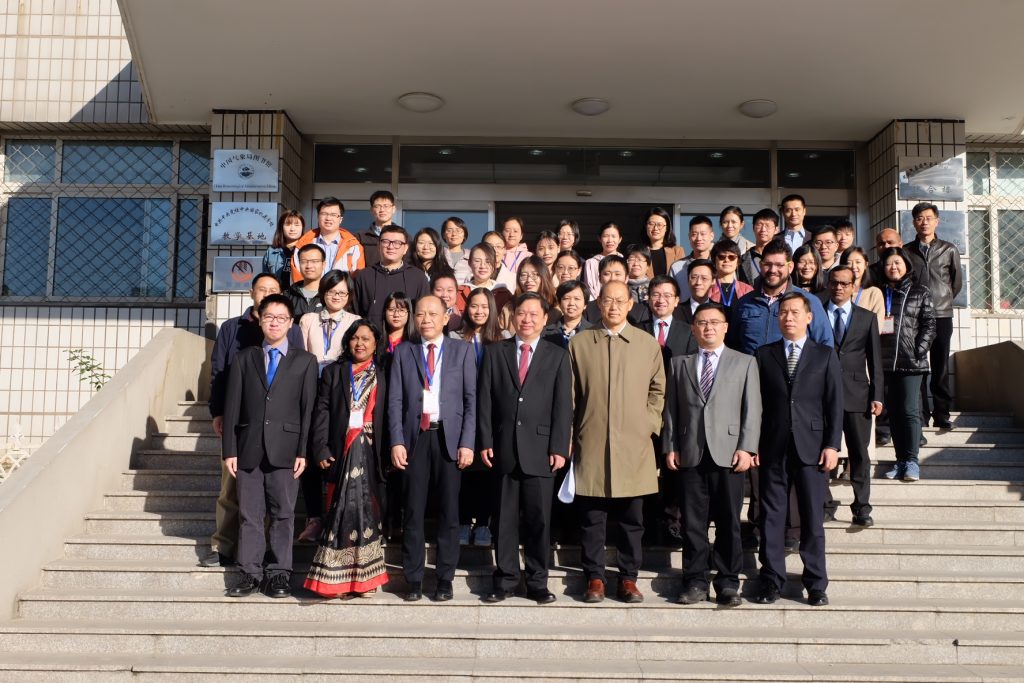
ROVING SEMINAR 2019: QUANTITATIVE PRECIPITATION ESTIMATION AND FORECASTING (QPE/QPF) (11-13 November 2019, Beijing, China)
| Topic | Presentation |
| A. Nowcasting System and Related QPF Forecasting Products By Mr. W. C. Woo from the Hong Kong Observatory, Hong Kong, China |
A1: RSMC for Nowcasting & SWIRLS Nowcast System A2: Probabilistic QPF & Impact-based Forecasting/Warning A3: Nowcast of Thunderstorm, Hail and Gust and Satellite Nowcast Applications |
| B. Raingauge and Radar Data Processing for QPE/QPF By Mr. Erik Becker from National Environment Agency, Singapore |
B1: Radar and Rain-Gauge Data Quality and Processing B2: Radar Precipitation and Rain-Gauge Adjustment Techniques B3: Radar-Based Nowcasting and Verification Techniques |
| C. Radar and Typhoon Related Rainfall Prediction and Their Applications in Flood Forecasting By Prof. Eiichi Nakakita from Kyoto University, Japan |
C1: Early Detection of Baby-Rain-Cell Aloft in a Severe Storm and Risk Projection for Urban Flash Flood C2: Radar Based Nowcast of Typhoon Related Rainfall and Its Orographic Effects C3: Hybrid Ensemble Forecast of Typhoon Related Rainfall and Its Applications into Flood Forecast |
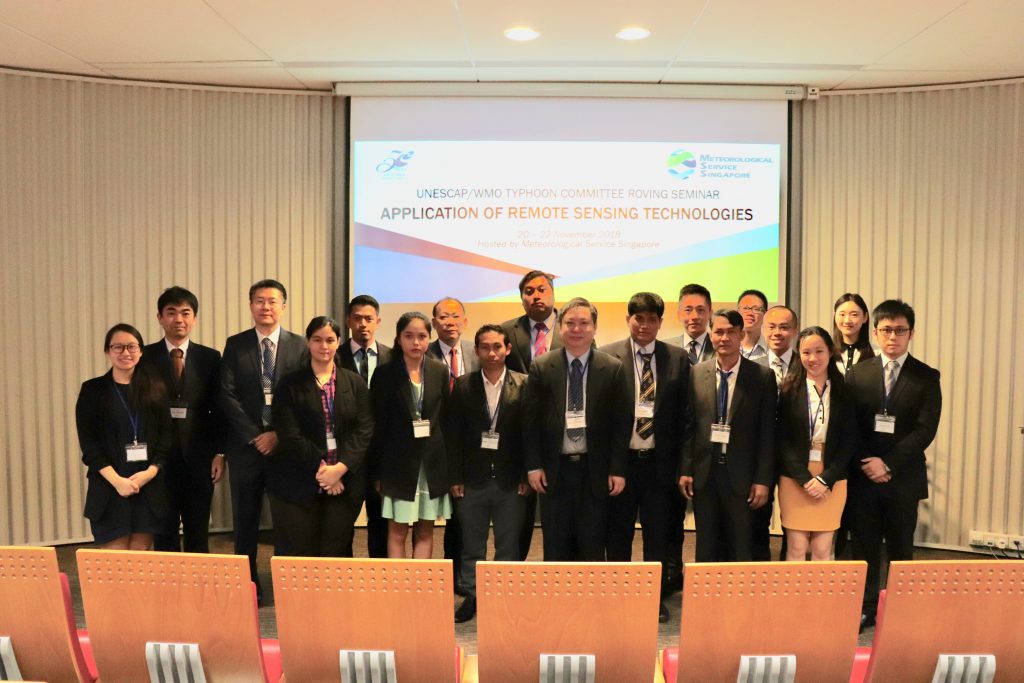
ROVING SEMINAR 2018: APPLICATION OF REMOTE SENSING TECHNOLOGIES (20-22 November 2018, Singapore, Singapore)
| Topic | Presentation |
| A. Advances in satellite missions and product applications in the Typhoon Committee region By Mr Koji Yamashita of Japan Meteorological Agency, Japan and Dr. Xiang Fang of China Meteorological Administration, China |
Introduction to Himawari-8/9 and its Products (Mr. Koji Yamashita) Chinese Meteorological Satellite and its Applications (Dr. Xiang Fang) The Satellite Methods for Tropical Cyclone Analysis (Dr. Xiang Fang) |
| B. Tropical Cyclone Analysis using Microwave Satellite Imagery By Dr. Xiang Fang of China Meteorological Administration, China |
Tropical Cyclone Analysis using Microwave Satellite Imagery |
| C. Radar Applications in Tropical Cyclone and Extreme Weather Monitoring and Nowcasting By Mr Ray Kong, Hong Kong Observatory, Hong Kong, China |
Part 1 Part 2 |

ROVING SEMINAR 2016: STORM SURGE (15-17 November 2016, Ha Noi, Viet Nam)
| Topic | Presentation |
| A. Advances in Operational Storm Surge and Coastal Inundation Prediction By Mr Nadao Kohno and Mr Masaki Itoh of Japan Meteorological Agency, Japan |
Phenomena of Storm Surges and its Risk Storm Surge Forecast and Outline of RSMC Tokyo Products A Development of Japan Area Storm Surge Ensemble |
| B. SLOSH – Storm Surge Modeling and Applications for Decision Support By Mr Arthur Taylor of National Weather Services, U.S.A. |
Ensemble Storm Surge Modeling Storm Surge Decision Support – Experiences and Lessons Learned |
| C. Development of an Operational Storm Surge Prediction System for a Coastal City – Hong Kong Experience By Mr Dickson Lau, Hong Kong Observatory, Hong Kong, China |
Part 1 – Impact of Historical Storm Surge in Hong Kong Part 2 – Development and Operation of Storm Surge Prediction System in Hong Kong |
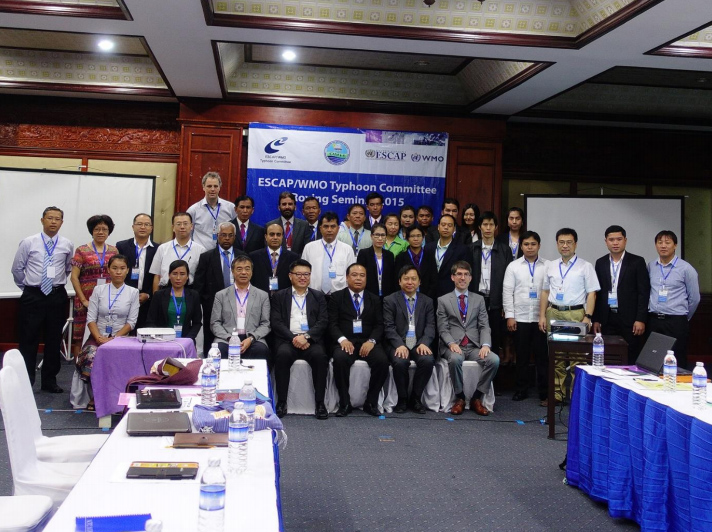
ROVING SEMINAR 2015: FLASH FLOOD AND LANDSLIDES (4-6 November 2015, Vientiane, Lao PDR)
| Topic | Presentation |
| A. Risk Reduction and Mitigation of Sediment-related Disaster By Mr Yoshiki Nagai from National Institute for Land and Infrastructure Management |
Sediment-related Disaster in Japan: The Features, Tendency and Actual Situation Sediment Disaster Countermeasures: Structural Measures and Monitoring for the Preservation of National Land Non-structural Measures: Designation of Sediment Disaster Alert Areas, Soil Precipitation Index, Warning and Evacuation systems |
| B. Advances and Challenges of Flash Flood Modeling and Prediction By Prof Xu-dong Fu from Tsinghua University |
Modeling and Prediction of Flash Flood altered by Sediment Transport in Mountain Streams Disposal of Earthquake-triggered Barrier Dams in China Strategies and Methods for Flash Flood Hazard Mitigation in China |
| C. River and Urban Flash Flood’s forecasting and Mitigation By Dr Dong-ryul Lee from Korea Institute of Civil Engineering and Building Technology |
River Flood Forecasting System and Mitigation in Korea Rainfall Radar System and Its Utilization for Flood Warning Strategies and Methods for Urban Flash Flood Forecasting and Warning |
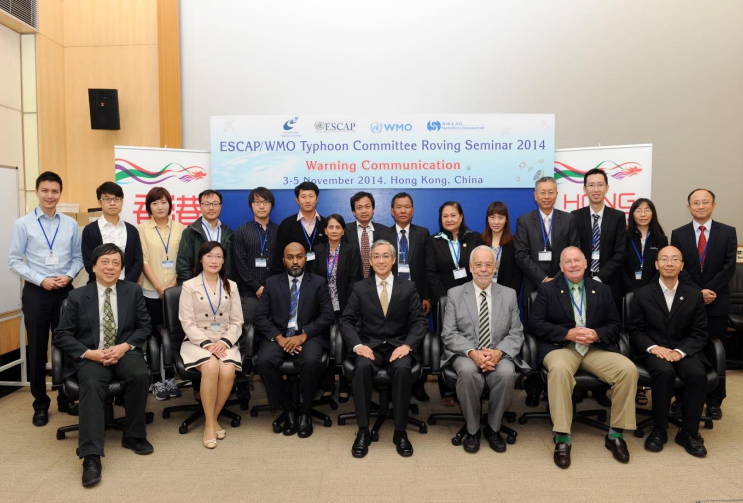
ROVING SEMINAR 2014: WARNING COMMUNICATION (3-5 November 2014, Hong Kong, China)
| Topic | Presentation |
| A. Effective Early Warning Systems and Risk Communications By Mr. Chip Guard of NOAA |
Common Sense Aspects of Risk Communication US Programs that Enhance Effective Early Warning Getting Effective Warnings to Isolated and Rural Locations |
| B. Media Liaison and Crisis Management for Disaster Risk Reduction By Mr. Ahmed Nadeem of Asia-Pacific Broadcasting Union |
Role of Media, Importance of Coordination and Integration with other Stakeholders Lessons learned from Media Integration Effective Media Communication, Reaching the General Public and the Most Vulnerable |
| C. “Warning Communication Strategies in the Era of Web Technology and Social Media – Hong Kong Experience By Ms. Sandy, M K Song and Mr. K L Lee of the Hong Kong Observatory |
Warning Communication Strategies – Hong Kong Experience Challenges and Opportunities of Media Communication (include Social Media) |
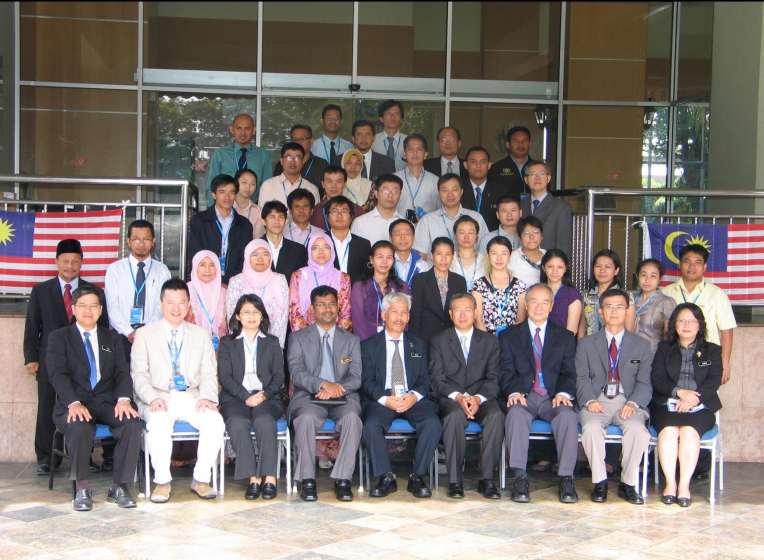
ROVING SEMINAR 2011: HEAVY RAIN AND FLOOD HAZARDS ASSOCIATED WITH LANDFALLING TROPICAL CYCLONES (20-23 September 2011, Petaling Jaya, Malaysia)
| Topic | Presentation |
| A. Overview of QPE/QPF Techniques and Hydrological Applications By Dr. Siriluk Chumchean of Mahanakorn University of Technology, Thailand |
Overview of QPE/QPF Techniques and Hydrological Applications QPF Techniques and Development QPE/QPF for Hydrology Applications and Flood Forecasting |
| B. Review of QPE/QPF Operational Systems and Application to Tropical Cyclone Rainfall Forecasting By Mr. H. Y. Yeung of Hong Kong Observatory |
Operational QPE/QPF Systems – An Overview Operational QPE/QPF Systems in Action Operational QPE/QPF – Some Latest R&D Activities Operational QPE/QPF – Application to TC Rainfall |
| C. Cause, Assessment and Management of Flood Hazards associated with Landfalling Tropical Cyclones and Heavy Rain By Prof. Chen Charng-Ning of Nanyang Technological University, Singapore |
Part 1aPart 1bPart 2 and 3Part 4 |
ROVING SEMINAR 2010: TROPICAL CYCLONE GENESIS AND LARGE SCALE INTERACTION (30 November-3 December 2010, Ubon Ratchathani, Thailand)
| Topic | Presentation |
| A. Tropical Cyclone Genesis and Seasonal Prediction of Cyclone Activities By Mr. S.M. Lee (Hong Kong Observatory) |
Seasonal Tropical Cyclone Forecast – Part 1 Seasonal Tropical Cyclone Forecast – Part 2 Tropical Cyclone Genesis |
| B. Effects of Tropical Cyclone Interaction with Monsoon, with Emphasis on Enhanced Rainfall By Professor Zhang Qinghong (Peking University) |
Effects of Tropical Cyclone Interaction with Monsoon Interaction Between Tropical Cyclone and Southwesterly Monsoon |
| C. Tropical Cyclone Satellite Analysis, including Microwave Images By Dr. Mark Lander (Univers |

